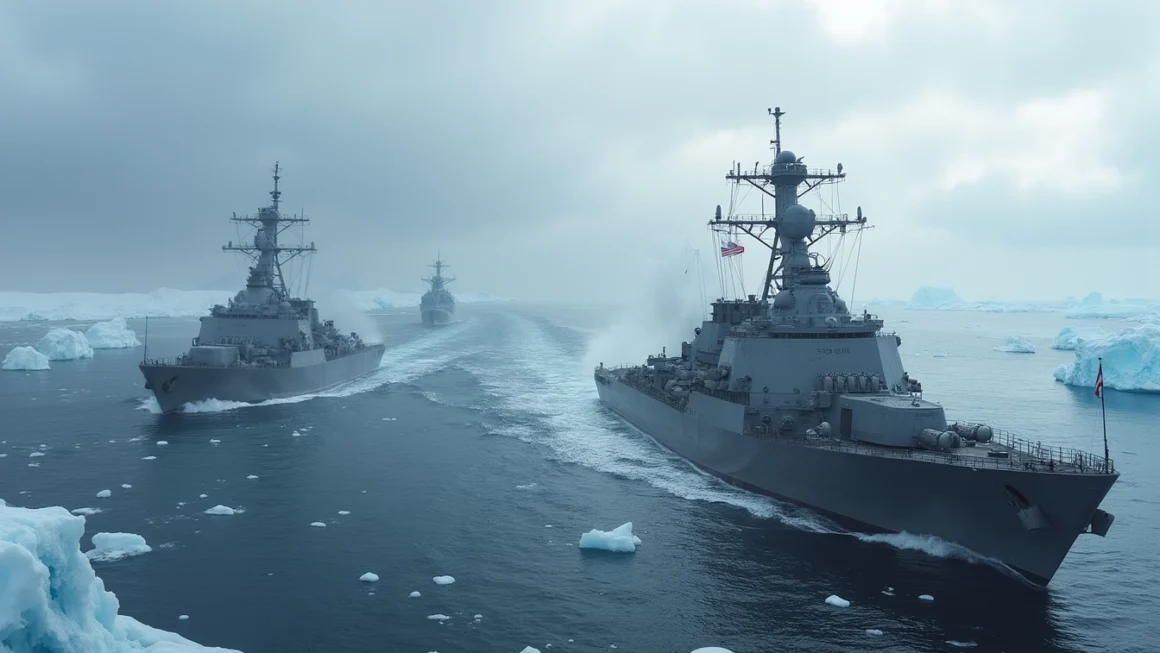Understanding the Truman Strike Group’s Area of Operations
Table of Contents
The Truman Strike Group recently embarked on significant operations in the Barents Sea, showcasing their strategic capabilities and reinforcing NATO alliances. This sensible maneuver not only underscores the United States’ commitment to regional security but also highlights the strategic importance of the Arctic region. By analyzing these operations, one can glean insights into naval strategies, international collaborations, and geopolitical implications.
The Strategic Importance of the Barents Sea
The Barents Sea holds a crucial position in global security dynamics. It serves as a gateway to the Arctic, a region of increasing interest to global powers due to its untapped natural resources and new shipping routes emerging as the ice caps recede. The presence of the Truman Strike Group in these waters reflects the United States’ focus on ensuring freedom of navigation and protecting allied interests in this densely strategic area.
Key Components of the Truman Strike Group
The Truman Strike Group comprises advanced naval vessels equipped with state-of-the-art weaponry and defense systems. Key destroyers partaking in the recent operations include:
- USS Ramage (DDG 61)
- USS Gravely (DDG 107)
These vessels are critical assets, providing comprehensive defense capabilities and enabling a robust naval presence in strategic waters. Their deployment in the Barents Sea exemplifies the strength and readiness of the U.S. Navy and its allies.
International Collaboration and Diplomacy
The operations conducted by the Truman Strike Group in the Barents Sea are not merely a show of military might; they are a testament to ongoing diplomacy and collaboration with allied nations. Such deployments are often part of joint exercises designed to enhance interoperability among NATO member states, building trust and reinforcing collective security objectives.
Enhancing NATO’s Strategic Capabilities
In a world marked by shifting geopolitical alliances, NATO’s agility and response readiness are paramount. Operations in regions like the Barents Sea offer invaluable opportunities for member states to fine-tune their coordination and communication, ultimately strengthening the alliance’s defensive and offensive capabilities. This collaborative approach is integral to countering potential threats and maintaining a balance of power.
Geopolitical Implications and Future Outlook
Deployments such as those by the Truman Strike Group in the Barents Sea carry significant geopolitical implications. They serve as a counterbalance to other global powers with vested interests in the Arctic, ensuring that the region remains a zone of peace and collaboration rather than contention. The strategic presence of NATO forces in these waters sends a clear signal of the alliance’s deterrent capabilities.
Preparing for Emerging Challenges
As global dynamics continue to evolve, so too must the strategies and capabilities of naval and military forces. By conducting operations in the Barents Sea, the Truman Strike Group exemplifies how modern navies are preparing for future challenges. The focus is on fostering international partnerships and augmenting strategic assets to ensure preparedness for any scenario.
For those interested in the nuances of military strategy and international cooperation, further exploration into how automation is revolutionizing defense systems can be a valuable pursuit. Check out the latest innovations in automation to understand how technology is shaping the future of operations.
Conclusion
The Truman Strike Group’s operations in the Barents Sea underline a multifaceted approach to regional security and military strategy. By highlighting the significance of the Arctic, fostering international collaboration, and addressing future challenges, these deployments offer valuable lessons in contemporary naval strategy. Engaging with such global security dynamics reinforces the importance of maintaining robust and agile alliances amidst a backdrop of geopolitical shifts. Readers are encouraged to stay informed and engaged with these critical developments.




